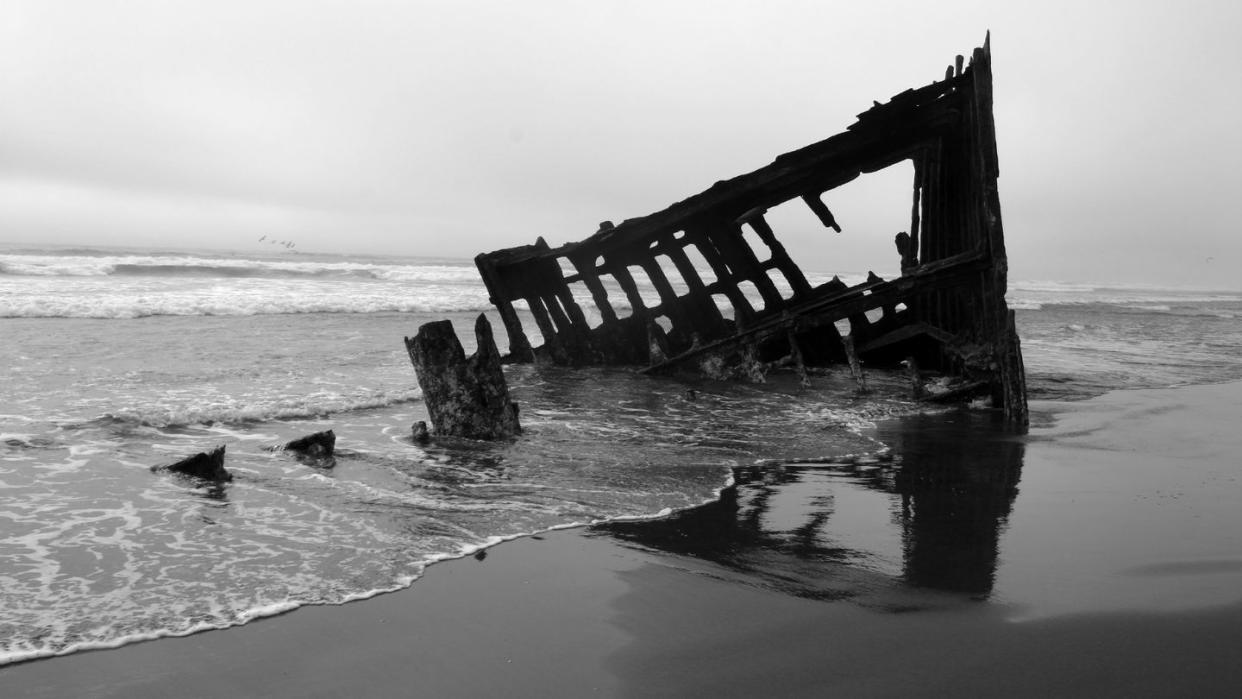In 1886, This Ghost Ship Vanished in a Shroud of Fog. It Just Returned to Lake Michigan.

The Milwaukee sunk 137 years ago after colliding with another ship on Lake Michigan when a sudden fog engulfed the ships.
That wreck was recently discovered by the Michigan Shipwreck Research Association remarkably intact.
The team found the wreck after just a two-day search, thanks to sonar imaging.
When the steamship Milwaukee ran into a sudden fog on Lake Michigan in July of 1886, the ship also ran into something else: the C. Hickox. That collision was enough to sink the Milwaukee, even as the Hickox and the City of New York steamer worked to rig ropes to keep the ship afloat.
Nothing worked, and two hours later, the Milwaukee hit the bottom of the lake—40 miles from Holland, Michigan, in 360 feet of water. The ship wouldn’t be seen again until the Michigan Shipwreck Research Association located it 137 years later.
“News accounts of the accident, as well as the study of water currents, led us to the Milwaukee after only two days searching,” Neel Zoss of the association said in a statement. Within two days of sonar searching, the team located a wreck. And a few weeks later, the group piloted a remotely operated vehicle through excellent visibility and to find the remarkably intact Milwaukee.
“We saw the forward mast still standing as the ROV headed down to the bottom,” Jack van Heest, ROV pilot, said in a statement. The ship was resting upright on the bottom of lake, facing northeast—just as it was when it collided on that night in July of 1886.
The association has made it a mission to recover as many lost ships as possible in the lake. The Milwaukee marks the 19th shipwreck that the team has found off the shores of West Michigan.
The fact that the Milwaukee was even out on Lake Michigan in 1886 was thanks to the Wall Street panic roughly 15 years prior. Commissioned in 1868 to join the Northern Transportation Company of Ohio (among the earliest steamship operators on the Great Lakes) the 135-foot-long Milwaukee had three decks—two for freight and one for passengers. The dimensions of the ship were crafted to fit the Welland Canal locks, allowing the ship to easily maneuver between Lake Ontario and Lake Erie on its run between New York and Chicago.
The Milwaukee was a mainstay of the line, but with the 1873 Wall Street panic leading the country into a depression and the westward expansion of railroads, the Northern Transportation Company was forced to reorganize. Still a relatively young ship, the Milwaukee was purchased by W. W. Ellsworth and began a conversion in 1881 at Port Huron, Michigan—turning the sleeping cabins into more space for wide cargo. Ellsworth then sold the ship, and by 1883, Lyman Gates Mason of Muskegon purchased the Milwaukee to move lumber from Michigan to Chicago.
The conversions made identifying the Milwaukee more difficult, Valerie van Heest said in a statement, adding that newspaper accounts of the sinking offered up some much-needed clues.
The Milwaukee had unloaded a cargo of lumber in Chicago and was headed to Muskegon to pick up another load. But the C. Hickox (a steamship the same size) was doing the equivalent in reverse, bringing lumber from Muskegon to Chicago. The ships were on identical headings on the calm lake, and at about midnight, the lookout on the Milwaukee spotted lights from the C. Hickox. Rules dictated that both ships were to slow down and turn right to avoid a collision, all while signaling their steam whistle.
With clear visibility, neither captain slowed, according to the records. But then came a sudden thick fog. The Hickox captain tried to turn, but the chain on his steam whistle broke, not allowing him to signal the change. The Milwaukee captain didn’t make a move. The fog momentarily parted, showing that even a final desperate turn was not enough for the fast-moving ships, as the Hickox smacked the side of the Milwaukee.
As all the crew escaped in lifeboats, the Hickox and the steamer (the City of New York, which was responding to a distress call) rigged ropes to keep the Milwaukee afloat. But two hours later, the ship was lost. Both captains suffered suspended licenses for failing to slow down in the situation.
With only historical accounts and a few pre-modified photos as reference, the association was excited to get a glimpse of the actual find. “In studying the video,” Craig Rich said in a statement, “we realized that Lyman Gates Mason, who owned the Milwaukee, had made both the pilothouse and the aft cabin smaller in order to maximize the amount of lumber the ship could carry on each run.”
The Michigan Shipwreck Research Association now has proof of a historically accurate steamship conversion—even if it’s 137 years later, and still submerged in Lake Michigan.
You Might Also Like
